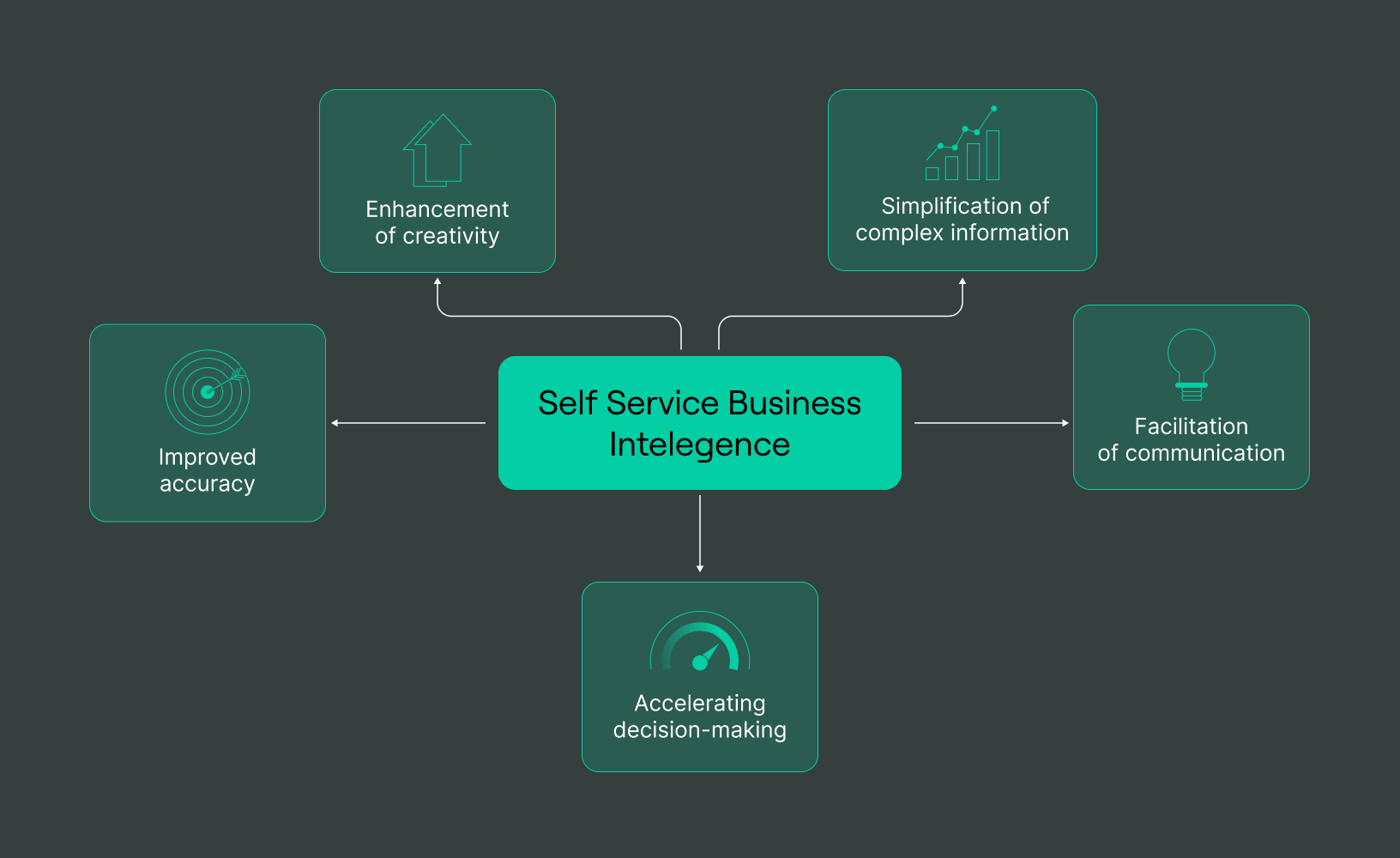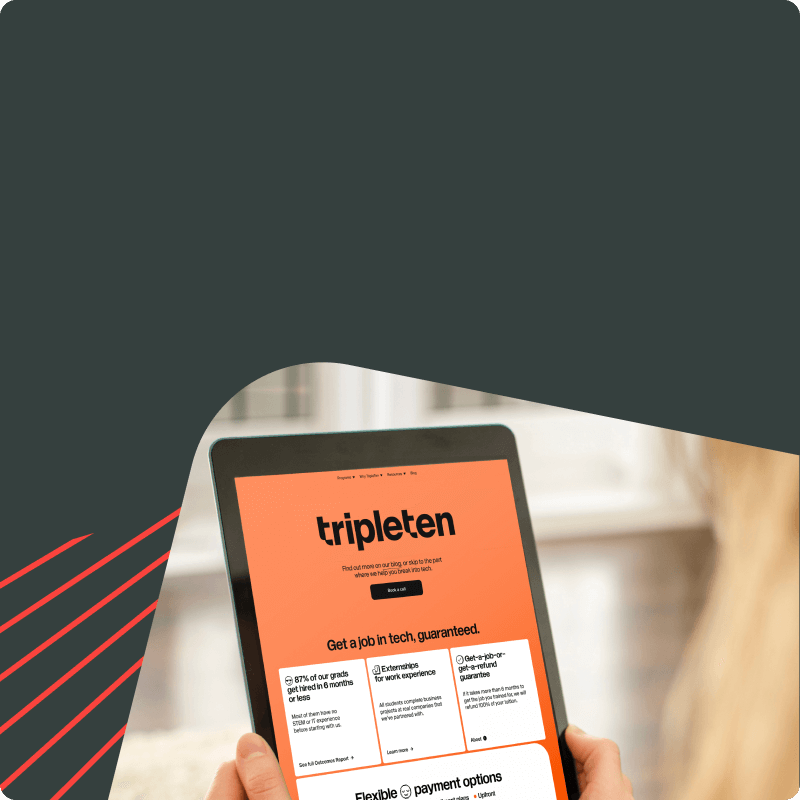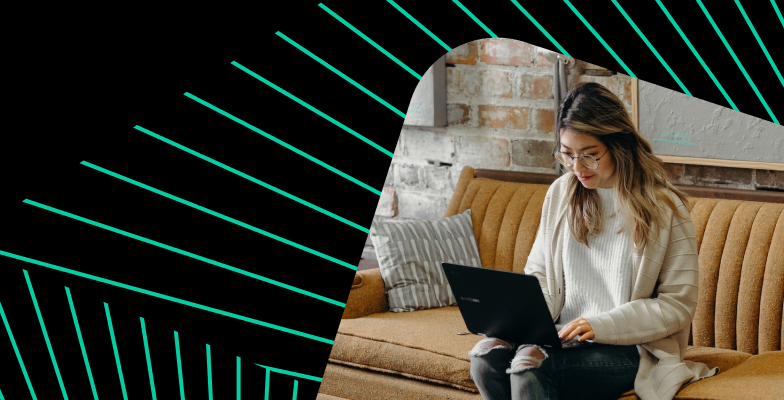
What is SaaS Business Intelligence?
SaaS Business Intelligence (SaaS BI) is a delivery model that offers business intelligence tools and services through a software-as-a-service framework. This arrangement allows organizations to conveniently access and harness advanced analytics, data visualization, and reporting capabilities over the Internet without requiring physical infrastructure on site.
Notably, SaaS BI platforms commonly incorporate valuable functionalities like data integration, data warehousing, ad hoc querying, and dashboards. By leveraging these capabilities effectively, businesses can derive actionable insights from their data sets to drive well-grounded decision-making.
Understanding SaaS Business Intelligence
The revolutionary impact of SaaS Business Intelligence lies in its utilization of cloud-based software solutions for data analysis. Through this innovative approach, organizations can effectively harness its benefits by embracing the widely used distribution model of SaaS business intelligence (SaaS BI). In this approach, trusted third-party providers securely host essential business intelligence tools online. By adopting SaaS BI tools, companies gain convenient access to analytics services such as dashboards and reports while enjoying flexible pricing options.
Businesses can effortlessly unlock powerful analytics capabilities via web applications without resorting to expensive hardware investments or intricate software installations. Unlike their traditional on-premise counterparts, SaaS BI tools excel at effectively managing colossal volumes of data within the cloud environment while ensuring uncompromised performance rates, even with exponential growth trends.
The main components of business intelligence are data warehouse, business analytics, business performance management, and user interface.
The data warehouse holds data obtained from internal sources as well as external sources.
The internal sources include various operational systems.
Business analytics creates reports as at when required through queries and rules. Data mining is also another important aspect of business analytics.
Business performance management is the linkage of data with business objectives for efficient tracking. This business performance is then broadcasted to an executive decision-making body through dashboards and share-point.
Daily, multiple companies amass copious amounts of data from diverse systems. To effectively employ these riches as usable insights for decision-making within teams, finding a business intelligence solution is crucial. BI software’s pivotal role in converting raw data into valuable and actionable information enables teams to make informed decisions based on empirical evidence.
By harnessing the analytical capabilities of BI software, it unlocks a multitude of opportunities for organizations. For instance, sales figures are compared across different businesses or regions, effectively tackling inventory issues and logistical challenges, budget analysis, and developing data-driven strategies to outperform competitors. Through the adoption of BI software, companies can not only succeed but thrive in today’s dynamically driven landscape.

In this article, we’ll talk about:
- Understanding SaaS Business Intelligence
- The role of data visualization in Business Intelligence
- SaaS BI vs. on-premises BI
- What is SaaS Business Intelligence used for?
- Why SaaS Business Intelligence is so much easier to work with
- Benefits of SaaS Business Intelligence
- Key considerations when choosing a SaaS BI solution
- DoubleCloud: a powerful data visualization BI solution
- Final words
The role of data visualization in Business Intelligence
Data visualization, an integral component of business intelligence (BI), plays a pivotal role in unravelling the intricacies of complex data sets and extracting valuable insights. Its impact transcends mere visual appeal and extends to several crucial areas that fortify decision-making processes and foster effective communication within organizations:
1. Simplification of complex information: With data visualization, decision-makers can effortlessly comprehend and interpret trends and patterns through visually represented data. This transformative process simplifies the understanding of complex information, enabling in-depth analysis and facilitating informed decision-making.
2. Facilitation of communication: Decision-makers can skillfully transmit their insights and findings to other stakeholders, ultimately encouraging collaboration and alignment. The visual presentation of underlying data also elevates clarity and impact, cultivating clearer communication and fostering a shared understanding among team members.
3. Accelerating decision-making: Time is a precious resource in the business world, and data visualization accelerates decision-making. Data visualization expedites the extraction of actionable insights by allowing decision-makers to quickly identify trends and patterns.
4. Improved accuracy: Data visualization significantly enhances decision-making accuracy as it provides a lucid and concise depiction of data. By simplifying complex data sets, it aids in reducing errors and inaccuracies that can emerge. Decision-makers can confidently depend on these visualizations as trustworthy sources of information.
5. Enhancement of creativity: Beyond its practical advantages, data visualization also nurtures creativity among decision-makers. Presenting information in novel and engaging ways stimulates innovative thinking and inspires new insights and ideas.
SaaS BI vs. on-premises BI
In today’s business landscape, teams have a plethora of choices when it comes to selecting business intelligence (BI) tools. To make the decision-making process more accessible, it’s beneficial to first determine whether you prefer a SaaS BI solution residing in the cloud or an on-premises option.
While on-premises tools have been the norm for many years, the exponential growth of cloud adoption has revolutionized the possibilities of data analytics for teams. When evaluating saas business intelligence tools, here are vital factors to consider.
Below are the advantages and disadvantages of SaaS BI and on-premises BI solutions:
SaaS BI
Advantages
-
SaaS BI solutions offer the advantage of lower upfront costs. This is because there is no requirement for hardware, software development, IT resources, machines, or servers. As a result, users can enjoy the benefit of affordable pricing.
-
SaaS BI solutions ensure faster implementation. While on-premise solutions can take months to perform, SaaS BI solutions can be set up within days or even hours. This allows businesses to start utilizing the solution and reaping its benefits quickly.
-
Scalability is a key feature of SaaS BI solutions. Businesses can scale up or down their usage based on their specific needs. Importantly, this scalability can be achieved without requiring additional hardware or software investments.
-
Accessibility is another significant advantage offered by SaaS BI solutions. Users can access these solutions from any location that has an internet connection. This level of accessibility enables remote teams to easily collaborate.
Disadvantages
-
Limited customization is a factor when comparing SaaS BI solutions with on-premises solutions. It’s worth noting that the former often offers fewer options for customization.
-
Security concerns are raised when utilizing SaaS BI solutions as data is stored in the cloud and accessed over the internet. These concerns stem from the potential vulnerabilities that may come with this setup.
-
Dependence on the provider is another crucial aspect when opting for SaaS BI solutions. This dependence on the providers' infrastructure and support may result in vendor lock-in and limited flexibility, which should be considered when making a decision.
On-premises BI
Advantages
-
Greater control: On-premises business intelligence (BI) solutions offer organizations enhanced control over data security, customization, and integration with their existing systems.
-
Security: On-premises BI solutions ensure heightened security measures as data is stored on-site rather than in the cloud.
-
Customization: On-premises BI solutions can be tailored to meet individual business requirements, thus offering increased flexibility.
Disadvantages
-
Higher upfront costs can be a drawback of on-premises BI solutions. They typically involve substantial expenses for hardware, software, and IT resources.
-
These solutions require continuous maintenance and support, which can incur significant costs and take up valuable time.
-
The scalability of on-premises BI solutions may be constrained due to the need for additional hardware and software to manage growth.
What is SaaS Business Intelligence used for?
Business intelligence technology is becoming increasingly important for organizations as they navigate the vast amounts of data available to them. SaaS Business Intelligence (BI) can be used for a variety of purposes, including:
1. Data analysis: SaaS business intelligence software, like PowerBI, analyzes data from various sources, such as databases, spreadsheets, and cloud-based applications, to identify trends and patterns.
2. Reports: SaaS Software enables users to generate informative reports, charts, and visualizations to comprehend and effectively communicate data insights.
3. Dashboards: With SaaS BI Software, users can construct interactive dashboards that offer real-time data insights and facilitate monitoring crucial key performance indicators (KPIs).
4. Self-service analytics: This is a valuable feature provided by SaaS software. The capability allows users to independently explore data and generate insightful discoveries without needing the assistance of IT professionals or data analysts.
5. Collection: Modern SaaS BI tools can foster collaboration among users. By allowing them to share data, reports, and insights easily, these tools enhance teamwork and communication within an organization.
6. Mobile access: Using SaaS business intelligence software provides users with convenient mobile access to data and analytics. This functionality empowers individuals to confidently make data-driven decisions even when away from their desks.
Why SaaS Business Intelligence is so much easier to work with
SaaS BI has several inherent advantages over on-premises BI in terms of ease of deployment, updates, and maintenance. Here are some of the advantages:
1. Ease of deployment: SaaS BI solutions are conveniently hosted in the cloud. Allowing users to access them effortlessly through an internet browser. This eliminates the cumbersome task of setting up infrastructure, thereby saving organizations valuable time and resources. Moreover, modern software deployment solutions have simplified the process of getting started with BI enabling organizations to embark on their analytical journey swiftly and without requiring specialized technical knowledge.
2. Automatic updates: SaaS BI solutions, being automatically updated by the provider ensure that users always have access to the latest features and functionalities. Consequently, this eliminates the hassle of manual updates and maintenance.
3. Lower maintenance costs: SaaS BI solutions require less maintenance than on-premises solutions since the provider assumes responsibility for upholding the infrastructure and SaaS business intelligence software. This significantly alleviates the workload on IT departments and software buyers. Enabling them to divert their resources toward other essential tasks.
4. Scalability: SaaS BI solutions can swiftly adjust their scale according to a business’s demands without requiring additional hardware or software. Such adaptability enables organizations to conform to fluctuating business requirements effortlessly.
5. Accessibility: SaaS BI solutions empower teams to collaborate effortlessly by enabling access from any location with an internet connection. Such flexibility enhances communication and bolsters collaboration within organizations.


TripleTen replaces Metabase & builds powerful BI with DoubleCloud
Encountering significant problems with Metabase, TripleTen switches over to DoubleCloud for building BI.
Benefits of SaaS Business Intelligence
An organization can gain a bunch of benefits by utilizing this approach to business reporting. The ultimate goal of generating BI reports is to deliver data in a more comprehensive format that is easy to read.
Enhanced data accessibility and scalability
SaaS BI solutions can be easily accessed from any location as long as there is an internet connection. This convenient feature promotes seamless collaboration among remote teams. Moreover, the scalability aspect of SaaS BI solutions assures businesses that they can effectively handle increasing amounts of data without sacrificing performance.
Cost-efficiency and flexibility
SaaS BI solutions offer businesses lower initial costs and ongoing maintenance expenses than on-premises solutions. This factor renders them a more cost-effective option. Furthermore, these solutions can be effortlessly adjusted according to a business’s specific requirements, thereby offering enhanced flexibility.
Simplified data integration and management
Utilizing SaaS BI solutions empowers businesses to seamlessly merge information from various sources, including databases, spreadsheet programs, and cloud-based applications, onto one consolidated platform. This cohesive integration streamlines managing business data sets while facilitating an easier extraction of valuable insights.
Real-time insights and decision-making
SaaS BI solutions can offer real-time data insights. These insights empower businesses to swiftly and effectively make data-driven decisions. Consequently, this leads to enhanced operational efficiency and a competitive edge.
Key considerations when choosing a SaaS BI solution
Highlighted below are key considerations you should make when choosing a SaaS BI solution:
Scalability and performance
Ensuring a SaaS BI solution’s effective handling of large datasets requires careful assessment of its scalability and capacity. This evaluation holds great importance in accommodating future growth requirements and achieving efficient data processing.
The solutions' scalability empowers it to handle expanding amounts of data, cater to more users and seamlessly integrate additional sources without any degradation in performance. These capabilities are pivotal for businesses relying on accurate insights for decision-making while ensuring unhindered growth alongside their organizational goals.
Data security and compliance
Ensuring the security of sensitive data and confidential business user information is paramount in a SaaS BI solution. It is necessary to implement robust security measures and data protection protocols. By providing protected internet access, access controls, and secure data transmission, unauthorized access or data breaches can be prevented. Furthermore, compliance with relevant regulations like GDPR or HIPAA is crucial in mitigating legal and reputational risks.
Ease of use and user interface
A user-friendly interface is vital for driving user adoption and reducing the learning curve associated with a SaaS BI solution. Intuitive navigation, drag-and-drop functionality, and customizable dashboards make exploring and analyzing all your data easier without extensive training. A well-designed and visually appealing interface enhances the user experience, promotes efficient data exploration, and encourages widespread adoption across the organization.
Customization and integration capabilities
A SaaS BI solution must be able to integrate with current systems and third-party applications to ensure seamless data flow and thorough analysis. Through integration capabilities, data can be gathered from diverse databases, cloud platforms, or APIs.
Furthermore, customization options allow businesses to customize the solution according to their distinct reporting needs and align it with their individual business processes.
Customer support
Robust customer support is needed when picking a SaaS BI solution. Technical issues or questions may arise during implementation, usage, or troubleshooting. A responsive and knowledgeable support team can provide timely assistance, address concerns, and resolve any issues that may arise. Reliable customer support ensures a smooth user experience and minimizes data analysis and reporting process disruptions.
DoubleCloud: a powerful data visualization BI solution
DoubleCloud Visualization, as a data visualization tool, allows users to create and configure dashboards and graphs. Users can then analyze data from various sources using unique connectors, like ClickHouse, and Google Data Studio. Here are some key features and benefits of DoubleCloud Visualization:
Features:
- Fast and simple to use.
- Free to use.
- Unique connectors, including ClickHouse.
- AI-powered insights.
Benefits
- Gain insights faster.
- Easy to set up all the architecture needed.
- Easy to use visualization tool.
- Present data and information to stakeholders clearly and concisely.
Many who intend to use DoubleCloud Visualization can sign up for a free account on its website. Once signed up, they can connect their data sources and create dashboards and graphs to analyze their data. The tool is fast and simple to use, making it accessible to users with varying technical expertise.
Final words
By utilizing SaaS Business Intelligence (BI), individuals can effectively conduct data analysis activities like generating reports, charts, and visualizations. This is facilitated by employing cloud-based software solutions. Implementing such tools provides several advantages encompassing reduced costs and seamless scaling capabilities. Furthermore, it enhances accessibility and simplifies integration across various datasets.
If you are a small business owner or managing a large enterprise, DoubleCloud Visualization is here to aid you in effectively extracting value from your data. Signing up for a free account today will open doors for experiences that will showcase how these powerful SaaS BI solutions can work for you. Take advantage of the intuitive interface, the capability to customize features, and AI-powered insights to fully unlock the potential within your data.

DoubleCloud Visualization. Get insights with ChatGPT!
Don’t waste time reading numerous reports and manually analyzing data — rely on AI-Insights and get fast and accurate conclusions.
Frequently asked questions (FAQ)
What is the importance of business intelligence in big data?
What is the importance of business intelligence in big data?
SaaS Business Intelligence (BI) is a delivery model that offers business intelligence tools and services through a software-as-a-service framework.
How does data visualization enhance the effectiveness of business intelligence?
How does data visualization enhance the effectiveness of business intelligence?
Can SaaS Business Intelligence solutions handle large and complex datasets? How does data visualization enhance the effectiveness of business intelligence?
Can SaaS Business Intelligence solutions handle large and complex datasets? How does data visualization enhance the effectiveness of business intelligence?
Start your trial today



